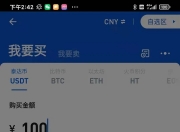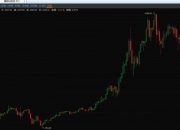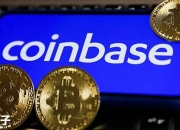比特币(英语:Bitcoin,简写:BTC,货币符号:฿),是一种用开源的 P2P 技术的软件而产生的电子货币。虚拟货币“比特币”的概念最初由中本聪(Satoshi Nakamoto,可能化名)在 2009 年提出。现在比特币也指根据中本聪的思路设计发布的开源软件以及建构其上的整个 P2P 网络。
Bitcoin (English: Bitcoin, short: BTC, currency symbol: 3647;) is an electronic currency generated by open-source P2P technology software. The concept of virtual currency “bitcoin” was originally proposed in 2009 by Satoshi Nakamoto (possibly aliasing). Bitcoin is now also the open-source software designed to be released along with the entire P2P network.
2008年,一位称为中本聪(Satoshi Nakamoto)的人发表了一篇新的论文,论文阐述了以密码学为基础的电子货币理论(也就是现在的比特币)。论文指出:世界各国的货币这么多,而每个国家的货币只是一个流通符号,一旦失去了国家的信用保障,它们就是一堆废纸。为什么不发明一套世界通用,而又无国别之分的货币系统呢?于是,论文详细讲述了如何利用密码学制造一种虚拟货币的方法。这就是比特币的理论。(交易比特币上“币汇交易所”)
In 2008, a new paper by a man called Satosh Nakamoto elaborated on the cryptography-based theory of electronic currency (now bitcoin). The paper noted that the world's currencies are so many, and each country's currency is a sign of circulation that, if it loses the country's credit security, they are a pile of paper. Why not invent a world-wide, country-free monetary system? So, the paper detailed how cryptology is used to create a virtual currency. That's the Bitcoin theory.
在论文中提出的比特币货币系统,有一些这样的属性:
The bitcoin currency system presented in the paper has some of these attributes:
(1) 去中心化:没有发行人,整个网络由用户构成,采用P2P方式存储和运行
(1) Decentralization: there is no issuer, the entire network is made up of users and stored and operated in P2P mode
(2) 全世界流通:世界上任意一台电脑,只要下载比特币客户端,就可以制造、出售、购买、收取比特币
(2) Worldwide circulation: any computer in the world that downloads a Bitcoin client can manufacture, sell, purchase, collect bitcoin
(3) 安全持有:操控比特币需要私钥,它可以被隔离保存在任何存储介质。除了用户自己之外无人可以获取。
(3) Secure holding: The control of Bitcoin requires a private key, which can be stored in isolation in any storage medium. No one can access it except the user itself.
(4) 低交易费用:可以免费汇出比特币,但最终对每笔交易将收取约0.001比特币的交易费以确保交易更快执行。收取的交易费,会做为奖励,发给后续去制造比特币的用户。
(4) Low transaction costs: Bitcoins may be transferred free of charge, but ultimately approximately 0.001 bits per transaction will be charged to ensure that the transaction is executed faster.
(5) 方便快捷的交易转账:只要你知道对方的账户地址,就可以转账,方便快捷
(5) Facilitated and expeditious transaction transfer: you can transfer it whenever you know the account address of the other person
(6) 防止通货膨胀:全世界一共只产生2100万个比特币,从发布之日起,每10分钟产生50个比特币,但产量每4年会减半,即发布4年后,每10分钟产生25个比特币,发布8年后,每10分钟产生12.5个比特币,这些新产生的比特币,属于制造比特币的人。
(6) Inflation prevention: The world produces only 21 million bitcoins, 50 bitcoins per 10 minutes from the date of issuance, but production is reduced by half every 4 minutes, i.e. 25 bitcoins per 10 minutes after publication, and 12.5 bitcoins per 10 minutes after publication, which are the newly generated bitcoins, which belong to the individual who manufactures bitcoins.
2009年,比特币系统正式发布,但由于知道的人很少,1比特币的价格仅几美分。
In 2009, the Bitcoin system was officially published, but the price of one bitcoin was only a few cents due to the small number of people known.
2013年4月,随着越来越多的人认可和发现比特币,比特币的价格4年来累计飙升了上万倍,1比特币的价格最高达到了266美元。
In April 2013, as more and more people recognized and discovered Bitcoin, the price of Bitcoin had increased exponentially by a factor of tens over four years, reaching a maximum price of $266 per bitcoin. & nbsp;
截止到 2013 年 5 月 31 日,全部发行比特币按市价换算为美元后,总值突破为 15亿美元。 与大多数现行货币不同的是,比特币货币系统是独立存在的,其运行不依赖于中央银行、政府、大型企业的支持或者信用担保。比特币使用遍布整个 P2P 网络节点的分布式数据库来管理货币的发行、交易和账户余额信息。中本聪采用密码学的原理,确保各个比特币节点按照既定的协议达成共识,从而确保货币流通各个环节的安全性。例如,比特币只能被它的真实拥有者使用,而且仅仅能使用一次,支付完成之后原主人即失去对该份额比特币的所有权。
比特币货币总量按照设计预定的速率逐步增加,增加速度逐步放缓,并最终在 2140 年达到2100 万个的极限。P2P 的分布式特性与去中心化的设计结构,确保了理论上任何机构都不可能操控比特币的货币总量,或者制造通货膨胀。在全球范围内,比特币可以通过多个线上的交易所和服务商进行兑换交易,也可以在线下找到兑换点,兑换为现钞或金币。
Unlike most current currencies, the Bitcoin currency system is independent and operates without the support of central banks, governments, large enterprises, or credit guarantees. Bitcoin uses distributed databases covering the entire P2P network node to manage currency distribution, transactions, and account balance information. Using cryptography to ensure that the Bitcoin nodes are agreed upon in accordance with established agreements to ensure the security of the money flow links. For example, Bitcoins can only be used once by their real owners, and once paid, the owners lose ownership of the share of Bitcoins.
1998年,戴伟(Wei Dai)的论文阐述了一种匿名的、分布式的电子现金系统:b-money。与此同时,Nick Szabo发明了Bitgold,提出工作量证明机制,用户通过竞争性地解决数学难题,然后将解答的结果用加密算法串联在一起公开发布,构建出一个产权认证系统。Hal Finney则把该机制完善为一种“可重复利用的工作量证明”。
在前人的工作基础之上,2008年,名不见经传的中本聪在http://metzdowd.com的密码学邮件组列表中发表了《比特币:一种点对点的现金支付系统》。2009年1月3日,比特币网络诞生,中本聪本人发布了开源的第一版比特币客户端。
比特币是最早的数字货币,是世界上第一个点对点现金系统,是资格最老的“币王”;在2017年的分叉币大潮中,很多币从比特币分叉而来,他们都是比特币的儿子——比特现金、比特金、比特币钻石、闪电比特币等;在2018年11月的比特现金升级中,比特现金又进一步分叉为BCHABC(简称BCH)和BSV。这些币出来以后,发展的好的,比如BCH和BSV,居于Top10的显赫地位,也有大佬们和成千上万的小弟在支持;某种程度上说,我们就是这场权力大戏的参与者。如果我们选择的那个币种成了下一个涨幅最高的币,成了下一个“币王”,那么我们就能享受到巨大的收益;但反之,如果我们选错了,投资了一个不成器的币种,那么我们只能坐视财富自由的机会溜走。
目前来看,BCH和BSV都表现良好,市值靠前,价格有优势;但我得提醒你们,在“九子夺嫡”中,当年如日中天的太子,大家以为铁定是下一任皇帝的太子,却在后来被黄帝亲手废黜;而人都称“八贤王”的八爷,也因心术不正、阴险狡诈,被权力所唾弃;只有一开始不动声色、表现的无欲无求的四阿哥,成功被康熙选中。这给我们的启示就是,除了看好BCH和BSV这两个大热人选外,对于基本面尚好的、却因为种种原因还未爆发的币种比如比特金、闪电比特币、比特币钻石等,我们也应该持续关注。
现在还在看这个比特币,已经错过机会啦,推荐一个未来能颠覆BAT的区块链应用吧,懒懒口袋,真正的区块链应用,今年刚起步,发行总量10亿枚,目前已发300万枚,每一个数字货币都代表公司股权,每周都可以参与分红的,实时到账。我放一句话在这儿,十年后再看,现在的懒懒就是十年前的比特币。管理员保留一段时间,这是改变穷人命运的机会。
I'm still looking at this bitcoin, and I've missed the opportunity to recommend a future block-chain application that could destabilize BAT, a lazy pocket, a real block-chain application, which began this year, issued a total of 1 billion pieces, and has now issued 3 million copies, each digital currency representing the company’s equity, and can be part of a week’s red mark, in real time. If I put it here, ten years later, the lazy is now a bitcoin of 10 years ago.
注册有任何问题请添加 微信:MVIP619 拉你进入群

打开微信扫一扫
添加客服
进入交流群





















发表评论